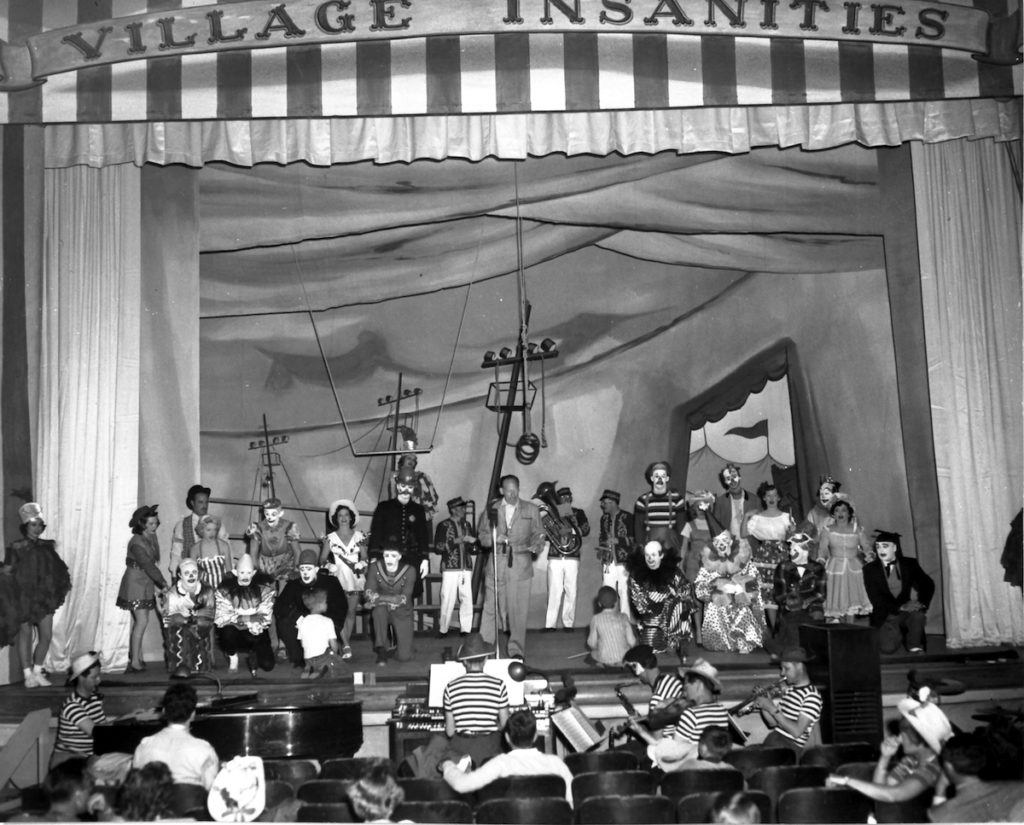The Plaza Theatre has a rich Hollywood history and over the years has given Palm Springs national and international exposure.
After decades of use the building deteriorated, but a fundraising program is now in place to restore the iconic theatre. When this restoration project is completed, the Plaza Theatre will be poised to once again provide the city and its visitors with top-notch entertainment in an iconic and fully-restored historic venue.
Here is a look back on its illustrious past.

Early Years
In 1936, Julia Carnell, a Dayton, Ohio, businesswoman and heiress to the National Cash Register Corporation fortune, reportedly paid Palm Springs pioneer Cornelia White $1 million to purchase 3.5 acres of what is now part of downtown. Carnell commissioned seminal Palm Springs architect, Harry Williams to design the La Plaza complex, including the Plaza Theatre, in a Spanish Colonial Revival style.
The Plaza Theatre opened on December 12, 1936 with the premiere of the George Cukor film “Camille” with its legendary star, Greta Garbo, who allegedly slipped into the back of the theatre after the lights went down. Garbo’s co-star in the film, Robert Taylor, came with Barbara Stanwyck on his arm (and they married a few years later).
The theatre featured fanciful village facades carved into the walls and twinkling, star-like lights on the ceiling. Carnell leased the theatre that year to Earl Strebe, the town’s first film exhibitor, who showed first-run movies and presented depression-era live radio shows. In the early days of Palm Springs, the village featured an annual event called the “Desert Circus” highlighted by an annual show called the “Village Insanities.” Originally performed on the grounds of the Desert Inn, the “Insanities” would later perform at the Plaza Theatre under the name of the “Village Vanities” during the 1940s.
Over the years, the theatre was the venue for memorable performances by the likes of entertainment giants Bing Crosby and Frank Sinatra. Performers Jack Benny, Bob Hope, and The Edgar Bergen and Charlie McCarthy Show broadcast radio shows from the Plaza, bringing national attention to Palm Springs. It also was one of the most popular movie theatres in the growing Palm Springs community and was the venue for a number of motion picture world premieres, including the musicals “My Fair Lady” and “Music Man.” The Plaza Theatre remained active for many years, but finally became dormant in 1989.
International Film Festival Influence
Sonny Bono’s vision was to create a Palm Springs International Film Festival at the Plaza Theatre. With the restoration of the building, first and foremost it will be offered for use by the Festival. In the late 1980s Bono worked closely with Marshall Stone, regional manager of Metropolitan Theatres. Stone, who became the Festival’s first board chairman, was also chairman of the Palm Springs Chamber of Commerce. Like Bono, he wanted to use the Plaza Theatre to stimulate business in downtown Palm Springs.
Palm Springs Follies
In 1991, the City Council awarded the Plaza Theatre lease to Riff Markowitz, a Canadian impresario and Hollywood TV producer. Markowitz and his wife, Mary Jardin, launched a vaudeville-type revue called “The Fabulous Palm Springs Follies” that ran in the theatre for 23 years. “The Follies” was popular with locals, but notably attracted groups from around Southern California and generated stories by the New York Times, CNN, and a range of international media. The long-running show brought international exposure to the theatre and in many ways helped revitalize downtown Palm Springs.
Establishment of Historic Protection
The Plaza Theatre was declared a Class 1 Historic Site in 1991. This designation prohibits any structural changes that do not adhere to the original Depression-era design.
The Restoration
The City of Palm Springs recently committed to a comprehensive restoration and rehabilitation plan that is estimated to cost approximately $10 – $12 million. The plan calls for significant infrastructure repairs, installation of new theatrical equipment, and structural restoration improvements to ensure the building meets current fire prevention and American Disabilities Act mandates.
Many naming opportunities have been identified with the project, and interested parties are encouraged to participate in the fundraising program by becoming Founders or contributing at other levels to the project. All contributions are tax-deductible to the extent allowed by law. For more information or to make a donation to help restore this historic building, CLICK HERE.
